Senegalese patients with advanced cancer have been suffering with severe pain due to morphine shortages in the country. Human Rights Watch investigates why.


Senegalese patients with advanced cancer have been suffering with severe pain due to morphine shortages in the country. Human Rights Watch investigates why.

“Satché must die by the end of the day.” Such is the surrealist Senegal of Alain Gomis’s Tey (Today), a toast to life through an exploration of its morbid counterpart. The latest from the French-Senegalese director is a diasporic tale of the final day in the life of Senegalese returnee Satché, played by Saul Williams, who has been away from his community after years of living in the US.
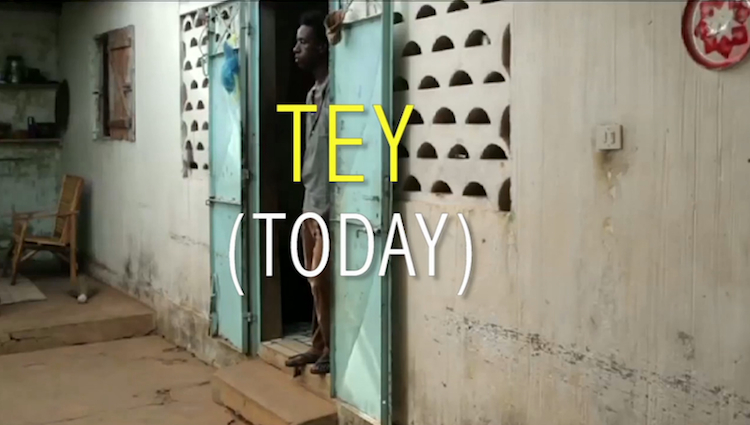
Tey makes its American theatrical debut on October 6, at New York’s Mist Harlem Cinema, and will thereafter run in selected theaters through a “hybridised, community-driven model.”
Said BelleMoon Productions founder Guetty Felin on the importance of reaching out to smaller markets: “The hybridised model for releasing Tey is really about ‘cutting our cloth’ as my mentor often says. We know our film very well, we know who is sensitive to this sort of cinema and who isn’t. It is definitely not mainstream.”
“Neither Alain nor Saul or my company BelleMoon productions for that matter, is mainstream. This is an independent foreign film with subtitles, and black … We’re not going to break box office with it and that’s not truly our main goal. We’ve figured out who our audience or community was for the film and we are basically bringing the film to them, whether it is through a small theatrical release, college [and] university screenings or community screenings.”
OkayAfrica’s Alyssa Klein spoke with Gomis about the film.
While living in Dakar during filming did you relate to Satché’s experience in terms of diaspora-related disconnect with Senegal?
I’ve lived between Dakar and Paris for 20 years now. I was saying with this film, like Satché, this is my place, this is my present. In fact I don’t have any patriotic feeling for no country. My land is in Guinea Bissau, my fights, my dreams are in Senegal, my cinema, my family, my loves, are everywhere. Even in my little family village in Guinea Bissau, I don’t know no pure people. As soon as you understand that everybody is fighting in his own body, you deal with human beings with fundamentally [the] same type of doubts. I am a filmmaker, I’m dealing with souls, I’m disconnected everywhere, and connected everywhere, just like Satché.
What about your experience with film, if anything, made you realise the necessity of a hybridised, community-driven model of distribution? Is there anything about this film in particular that would make such a model a goal?
Maybe each time that you’re trying to make something different, I mean with a free and no marketed form, you also have to imagine new ways to reach people, especially with an African film. Africa is like another planet for a lot of people. With this film we have organised special nights – “ciné-concerts” – in theatres, in underground places, in concert halls … trying to reach all kinds of audiences … from Addis Ababa to Sydney. We had wonderful experiences and above all, it is fun to do, travel with a film just like a band in tour. And people are surprised, because this film is about us, wherever you come from. In the Q&A people talk about themselves.
Has your attitude toward death changed as a result of your work on Tey?
Yes. One of the reasons I’ve made this film was to face my own fear of death. It has become a reality. And if your death becomes a reality, your life becomes a reality. It’s a film about life.
What music would you listen to if you knew today was going to be your last day to live?
I know now, that is something you can’t predict. I have to make my life connected with my present. My last days have started 40 years ago. Every second is my last one. Today I have listened to Baloji.
Watch the trailer below.
For more on Tey read the full press release and stay up to date here.
Alyssa Klein for OkayAfrica

Crabs scuttle among mangrove roots in a dense riverbank forest in southern Senegal, where a major reforestation project is reviving wildlife and boosting the west African country’s lukewarm economy.
“Everything you see here has been replanted. Before 2006, there wasn’t a single tree,” said Senegalese environmental activist and government minister Haidar El Ali in Tobor, a village near Ziguinchor, the main city of the Casamance region.
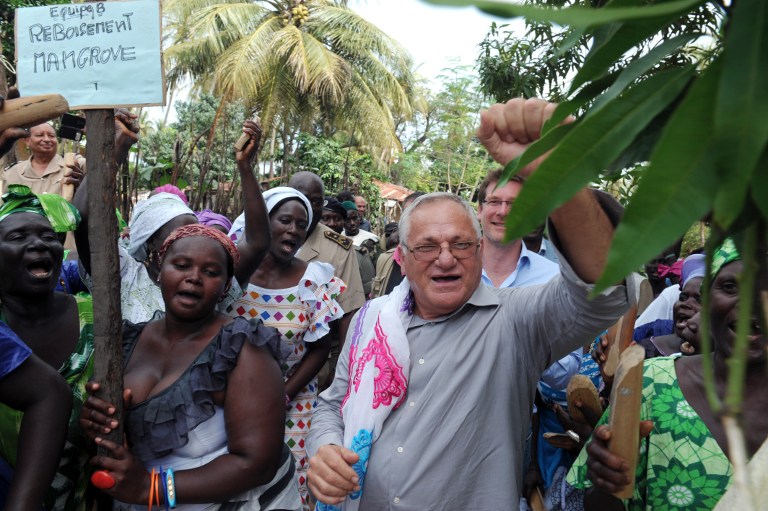
He gestured toward mangroves tied to stilts bordering the Casamance river, planted by his Oceanium environmental organisation to boost an area that experts said was severely depleted by deforestation, drought and increased salt levels in the water.
Alongside the road leading to the neighbouring Marsassoum valley, and around the paddy fields used in the centuries-old activity of rice cultivation, various mangrove species are abundant.
The habitat was destroyed through decades of illegal logging in mangrove forests for firewood and building.
“There has been nothing here since the 1960s and 70s. Replanting is bringing back the mangrove,” said Simeon Diatta, the chief of Diakene Diole village near the Guinea-Bissau border, pointing at riverside vegetation.
Reforestation revives mangroves
Since 2006, reforestation has revived 12 000 hectares (30 000 acres) of mangrove in Senegal – an area larger than the city of Paris – mainly in Casamance but also in the north and centre of the country, according to official figures.
“I am struck by the extraordinary success that this initiative represents,” French Development Minister Pascal Canfin said on a recent visit to Casamance, descriving the programme as “model for Senegal, Africa and the world”.
“With the return of the mangrove, people are catching a lot of fish and oysters. Women are selling them on and making a lot of money,” Diakene Diola resident Simeon Diatta told AFP.
The mangrove, which thrives in salt water, is important for trade in forestry and fishery products.
The swamps provide a nursery area for many marine species, most of which are important for food such as fish, crabs and shrimp.
In the nearby village of Diakene Ouolof, resident Mariama Tine said “everything was dead” before the replanting programme began.
“The mangroves stopped the advance of salt and we were able to recover rice fields. There were no fish here before but we are starting to get a lot of them, along with oysters and ark clams,” she said.
Mangroves vital to indigenous worship
Tobor mangrove farmer Mamadou Faye Badji says the ecosystem created by the tree is also vital in the worship rituals of the region’s indigenous people.
“The totems of the Diola are all in the forest. If forests are not dense enough, they will not stay here,” he told AFP, while Fisheries Minister Haidar El Ali said the mangrove had become part of the cultural heritage of the region’s villagers.
The damage done to mangrove swamps by deforestation remains “enormous”, however, and the battle is far from won, according to an environment ministry official.
Senegal’s economy is concentrated on fishing, tourism and groundnut production, with limited mineral resources and a narrow export base.
While the country has a long history of stability, its growth is below average on the continent and the reforestation is expected to contribute to an improvement.
Yet the project is not without controversy, with some believing the mangrove tree’s abundance is detrimental to the production of rice, since paddy areas are increasingly making way for mangrove swamps.
Lecturer Pape Cherif Bertrand Bassene mused in a recent column for the Quotidien daily newspaper that locals in Casamance, rather than welcoming the reforestation workers, should be decrying their “ignorance of tradition which results in a policy that does violence to this rice-growing culture”.
Bassene said reforestation had led to the “unavoidable consequence of divorcing the Casamance youth from their traditional rice-growing roots” and had reestablished mangrove swamps that local people “have always cut down to turn them into rice fields”.
Malick Rokhy Ba for AFP

“Is it a crime now, being an immigrant?” asks Eric Williams, a Cameroonian living in Rabat, where the murder of a Senegalese man has stoked fears among Morocco’s sub-Saharan community.
On August 12, Ismaila Faye (31) was stabbed to death near the capital’s central bus station during an argument with a Moroccan over seating, according to the preliminary investigation.
Local media highlighted the racist nature of the attack, sparking concerns of a rise in hostile behaviour towards black Africans, many of whom pass through Morocco illegally in their quest to reach Europe and a new life.
A week after the murder, hundreds of mostly Senegalese immigrants gathered outside the morgue in Rabat to pay homage to the victim and protest against racism.
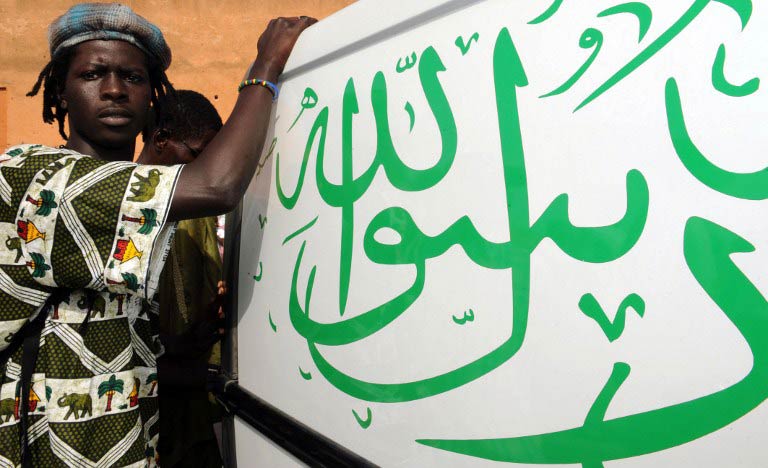
Moroccans have also been active on social media to denounce violence against the African community.
Just a stone’s throw from Spain, Morocco has increasingly become a permanent home for sub-Saharans seeking a better life in Europe but unable to get there, with local NGOs putting the estimated number of them at more than 20 000.
But their coexistence with Moroccans is often fraught with difficulty.
Earlier in the summer, notices appeared in Casablanca, Morocco’s largest city, baldly stating that sub-Saharan immigrants were barred from renting certain properties.
“Our situation is really bad. Nearly 15 immigrants were attacked in just one week,” says Williams, who heads an anti-racism group in Morocco.
“There needs to be a racist murder for people to take our problems seriously,” he adds.
Williams says some Moroccans are fundamentally opposed to their presence, which they see as a threat to their jobs, in a city where unemployed youths stage regular street protests demanding work.
In Morocco’s main cities, sub-Saharan women are often to be found begging at the side of the road, while young men try to peddle their wares, selling anything from cheap watches to polished wood carvings.
“I don’t understand why some Moroccans treat Africans in a contemptuous way. Coming here I thought I would be in a neighbourly country, a brother country,” Williams says.
Anna Bayns, a Senegalese student at Rabat University, agrees that violence against the sub-Saharan community is on the rise, even if there are no official statistics to prove it.
“We are often referred to as ‘negroes’,” she said.
‘Like slaves’
In the poor neighbourhood of Takadoum, six immigrants, most of them from Cameroon, share a small room which gets stiflingly hot during the summer, and together they struggle to make ends meet in a sometimes hostile environment.
“We are treated like slaves,” says one.
In the informal sector, workers get paid a pittance, less than five euros a day, he says, and finding accommodation is difficult.
Without a rental contract, the migrants are dependent on the goodwill of their often unscrupulous landlords.
“For this room, which is normally rented for 500 dirhams [47 euros], we pay 1 500 dirhams!” says another resident.

Several months ago, medical aid group Doctors Without Borders raised the alarm over increased violence by the authorities against illegal migrants, and announced that it was closing its projects in Morocco in protest.
Contacted by AFP, the head of migration and border control at the interior ministry, Khalid Zerouali, insists that authorities’ main objective is to “protect citizens”, adding that their “[border] security strategy is directed against criminal networks” and no one else.
“Our African brothers are welcome, but within the law.”
The European Union, with whom Rabat enjoys “advanced status” relations and which is the favoured destination of most African migrants in Morocco, is following the situation closely.
“We are obviously concerned about the reports that we have concerning the poor treatment of illegal migrants, mostly of sub-Saharan origin,” Rupert Joy, the EU ambassador to Morocco, told AFP.
“In my opinion the worst mistake one could make would be to pretend that the problem doesn’t exist and that it isn’t serious,” he said.
Jalal Al Makhfi for AFP
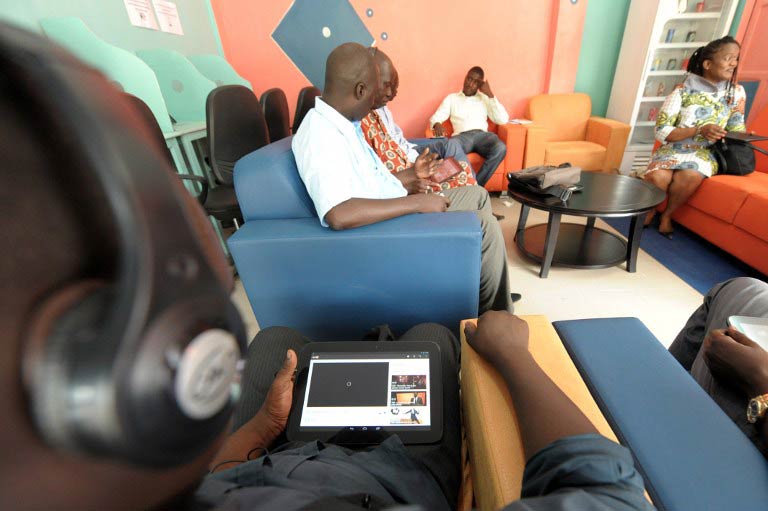
Among the washer women, carpenters, busy waiters and squabbling children sweltering under the midday sun on this dusty Dakar street, an internet revolution is taking place in the world’s first tablet café.
Next to the workshops, meat stores and barbershops on what could be any bustling street in sub-Saharan Africa, a grey concrete building stands out with a garish sign advertising the Tablette Café.
“This is the first tablet café in the world, a café that works with tablets,” said Tidiane Deme, the head of Google in French-speaking Africa.
The concept, introduced by the internet search giant, is a simple twist on the traditional cyber cafés which have been springing up across Africa as the internet boom takes hold, ditching PCs for tablet computers.
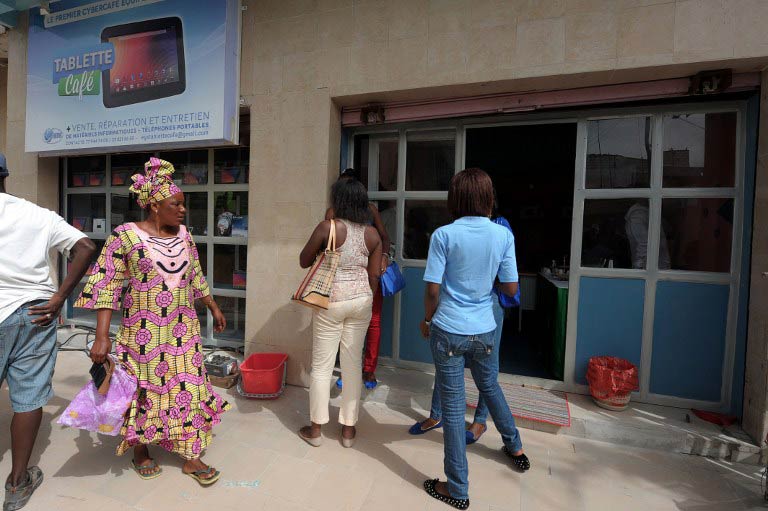
When Medoune Seck (33) opened his Equinoxe cyber café six years ago, he quickly discovered that frequent power cuts and exorbitant electricity bills were a major headache for him and his customers.
Then along comes Google which offered funding last year to turn one cyber café in Africa into a pilot tablet café. Seck applied and his café was picked as their guinea pig.
While tablets have taken advanced industrialised countries by storm and pushed cyber cafés further to the margins, in the developing world they could lead to their renaissance.
Tablet cafés could take hold in Africa because most people cannot afford to buy the devices, and tablets use batteries and mobile data connections which make them not vulnerable to power cuts.
The Equinoxe now sports 15 tablets and has installed cabins for private video chats, while a corner of the café is given over to a shop selling various items of electronic equipment.
Three PCs remain enthroned on boxes near a wall, but they do not generate much interest among clients, who recline on the café’s bright orange and blue sofas, jabbing at their touch screens.
Seck says his tablets cost more than PCs but they save on power bills as they consume 25 times less electricity.

He believes they can help revive cyber cafés which, according to Google, are in something of a slump precisely because of the high cost of electricity and frequent power failures cutting into business.
“Tablet computers will revolutionise Africa, and Senegal,” said Seck.
The simplicity of using the touchscreen devices could help bring computing to scores of new people.
An elderly grandmother in a billowing bubu robe, headscarf and sash from the house opposite the café was among the first through the doors to “bless” her neighbour’s business, and she left amused after being given an introduction to using a tablet.
Mamadou Camara, a 16-year-old Facebook and Skype user, enthused about the improved computing experience of tablets.
He complained about “cyber café PCs which are very slow and exhaust your credit”.
Upon arrival, customers hand over an ID card and pay in advance for a set connection time before they are given a tablet.
When they leave the device is reset, wiping out any data from their session, and it is ready for the next customer.
The Tablette Café charges the same price as its predecessor did for PCs: 300 CFA francs (80 US cents) per hour.
“Our hope is that cyber cafés attract new customers interested in a more simple and interactive way of going online, and make significant savings on their number one operating expense: electricity,” Alex Grouet, Google’s business development manager in Francophone Africa, said in a blog post.
Café owners should be able to invest the savings on electricity costs into improving their connection speeds, he suggested, thereby boosting their clients’ experience.
“We look forward to finding out as the project unfolds, and hope that people living in Dakar will stop by to try out something new.”
Coumba Sylla for AFP.